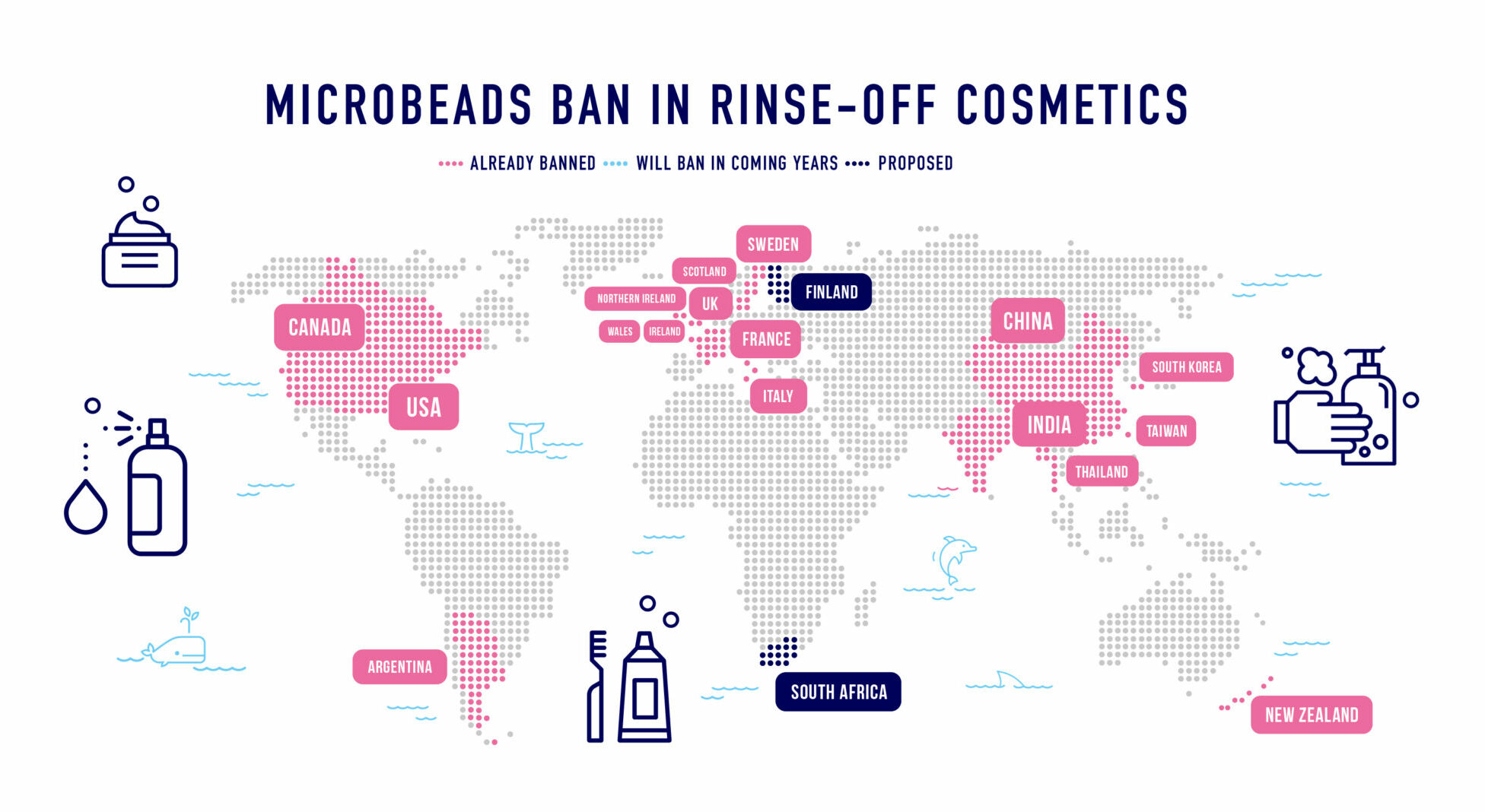
Microplastics: The Invisible Threat Lurking in Everyday Products
Share
Plastic. It dominates our landscapes, chokes our oceans, and permeates our very lives. But a new frontier in plastic pollution is emerging – one invisible to the naked eye, yet ubiquitous in its presence: microplastics. These tiny fragments, less than five millimeters in size, are stealthily invading our environment, raising concerns about their impact on ecosystems and potentially, human health.

This Plastic-Free July, we delve into the insidious world of microplastics, exploring their surprising presence in the products we use every day. From the face scrubs that cleanse our pores to the clothes that adorn our backs, microplastics are woven into the fabric of our daily routines.
A Shower of Plastic: The Microbead Menace
Microplastics come in two primary forms: primary and secondary. Primary microplastics are deliberately manufactured at this size for use in various industries, with cosmetics and personal care products being a major culprit. The ubiquitous microbeads found in exfoliating scrubs are a prime example.
A sobering 2022 study by the Plastic Soup Foundation found a staggering 87% of cosmetics containing microplastics. These tiny plastic beads wash down our drains, bypassing filtration systems, and ultimately end up in our waterways, rivers, and ultimately, the vast expanse of our oceans.
Beyond the Bathroom: A Microplastic World
Secondary microplastics, however, tell a different story. These insidious fragments form from the breakdown of larger plastic items over time, fragmented by relentless sun exposure and the relentless grind of weather. Plastic bottles and bags slowly succumb to these forces, eventually transforming into microplastics that pollute our environment.
The reach of microplastics extends far beyond our oceans. A 2019 study published in Environmental Science & Technology Letters found these miniscule plastic fragments lurking in a variety of everyday items, including:
- Synthetic clothing fibers released during washing
- Dust settling in our homes
- Even the food and beverages we consume
As per a recent article in Euro News, regular day to day items can also release microplastics which eventually end up being in our body. Items such as chopping boards, microwaveable plastic food containers, ice trays, paper cups (Yes they are not plastic but they require a sealant typically consisting of upto 10% HDPE) and teabags.
A Cause for Concern: The Impact of Microplastics
The widespread presence of microplastics raises significant environmental and potentially human health concerns. Marine life is particularly vulnerable, mistaking microplastics for food. This ingestion can lead to gut blockages, reduced feeding, and even death. A concerning 2017 study in Environmental Science & Technology identified microplastics in 114 out of 132 fish examined, raising questions about the impact on the seafood we consume.

Closer to home, as per a recent article in Straits Times, South East Asia tops global intake of microplastics, with Indonesians eating 15g a month. Consuming microplastic worth 15g a month is equivalent to 3 credit cards. Given our vast coastline and lack of proper waste management methods, plastics from landfills or dumping sites travels to ocean via rainwater and microplastics are ingested into pytoplankton and zooplankton which fish and aquatic animals feed on.
The potential human health risks of microplastics are still being actively researched. However, some studies suggest they may disrupt hormones and act as Trojan horses, carrying harmful chemicals into our bodies.
Dr. Erik Eriksen, co-founder of the 5 Gyres Institute, a non-profit focused on plastic pollution, highlights the challenge: "Microplastics are a stealthy threat. They're small, invisible, and ubiquitous. We're only beginning to understand the full scope of the problem."
A Step in the Right Direction: Banning the Microbead
Thankfully, awareness of the microplastics issue is growing. Several countries, including the United States and the United Kingdom, have implemented bans on microbeads in personal care products. This is a positive step towards tackling plastic pollution at its source. Movements such as Beat the Micro Bead have played a huge role in increasing awareness amongst the stakeholders to ensure a microbeads ban across different countries (see map below by Beat the Micro Beads) - but we still have a long way to go!!

Taking Action This Plastic-Free July
As consumers, we all have a role to play in reducing microplastic pollution. This Plastic-Free July, consider these actions:
-
Become a Label Detective: Scrutinize ingredient lists on personal care products, seeking out "microbead-free" or "plastic-free" labels. The Beat the Microbead website offers a helpful guide to navigate this plastic minefield.
-
Embrace Nature's Bounty: Opt for natural exfoliants like sugar or oatmeal scrubs instead of those containing microbeads. Check out Zero multiple's make up products here
-
Wash Wisely: Synthetic clothing releases microplastic fibers during washing. Washing clothes less frequently and opting for delicate cycles can help minimize this release.
-
Revamp your household items: At the Green collective , we have a range of products from chopping boards, blooming teas and others with which you can easily avoid ingesting plastics in your body.
- Support Sustainable Choices: Seek out brands committed to using plastic-free alternatives in their packaging and products.
Microplastics may be tiny, but their impact is significant. By making informed choices and supporting sustainable practices, we can all be a part of the solution. This Plastic-Free July, let's turn the tide on microplastic pollution and protect our planet for generations to come.
